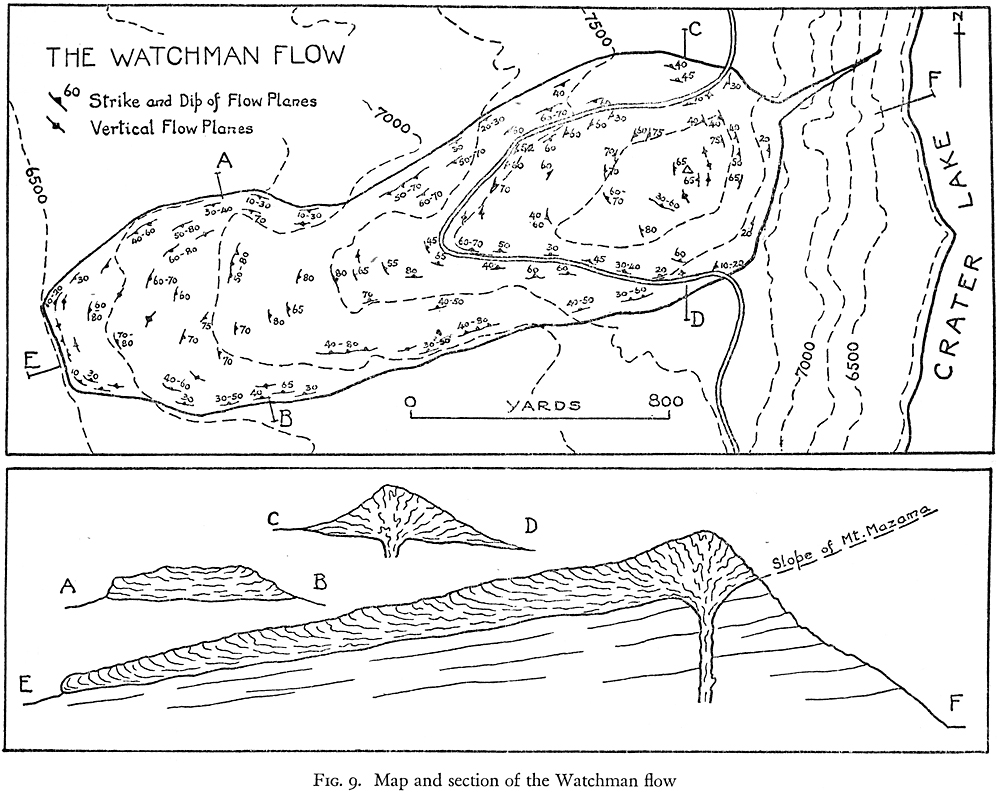The Geology of Crater Lake National Park, Oregon With a reconnaissance of the Cascade Range southward to Mount Shasta by Howell Williams
The Northern Arc of Vents
The Watchman Dike and Flow
Next to the Devil’s Backbone, the most conspicuous dike on the cliffs of Crater Lake is the one immediately beneath the Watchman. It stands vertically, forming a high wall cutting athwart the bedded lavas and ashes. Where it disappears beneath the talus, more than two-thirds of the way down the cliffs, its thickness is only about 6 feet, but upward it widens steadily to more than 50 feet and merges into the Watchman flow. There is no difference between the material of the dike and that of the surface lava, both consisting of massive, pale-gray porphyritic andesite. Within the dike, flow banding is obscure, but horizontal and vertical joints are well developed. This is one of the few dikes on the walls of the caldera which do not have black, glassy selvages, the margins being of the same pale-gray color as the interior and no less crystalline. At first sight, the dike seems to represent the actual feeder of the Watchman flow, and it has generally been so interpreted, but a study of the banding in the flow, though not entirely disproving this idea, casts considerable doubt on it. With better reason, the dike may be considered as an offshoot from the feeder common to both.
The Watchman flow has a distinct topographic expression, as may be seen in figure 9. Its length is almost 1 1/4 miles and its average width 2000 feet. The average thickness is between 400 and 500 feet. The flow must have been unusually viscous, for the snout and sides are extremely steep.


